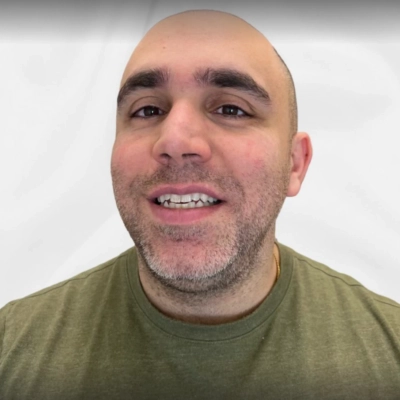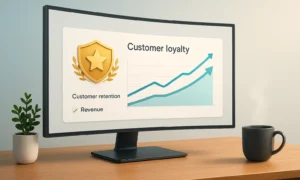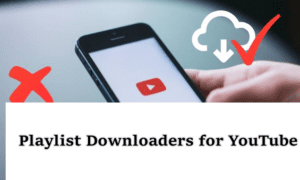17 Pricing Strategies That Boosted Revenue: Business Insights
Discover seventeen powerful pricing strategies that have demonstrably increased business revenue across various industries. Drawing from expert insights and real-world applications, these approaches range from value-based pricing to tiered experiences and outcome-focused models. Each strategy offers practical methods for transforming pricing structures to enhance client relationships, build loyalty, and boost overall revenue potential.
- Value-Based Pricing Transforms Client Relationships
- Modular Pricing Enables Customer-Paced Growth
- Bundle Core Services With Success Support
- Quality-Focused Pricing Elevates Roofing Brand Value
- Strategic Rate Increase Attracts Better Clients
- Discounts for High-Potential Clients Build Loyalty
- Good-Better-Best Model Boosts Average Revenue
- Annual Price Increases Without Exception
- Tiered Experience Packages Elevate Barber Revenue
- Charging for Outcomes Rather Than Time
- Raising Prices During Slowdown Attracts Quality
- Outcome-Based Pricing Creates Client Partnerships
- Tiered Access Makes Territory Mapping Accessible
- Capacity-Based Dynamic Pricing Balances Workflow
- Test Prices and Trust Customer Purchasing Behavior
- Payment Flexibility Tiers Expand Customer Base
- Visual Tiered Options Drive Higher Bookings
Value-Based Pricing Transforms Client Relationships
In the marketing strategy industry, a pricing strategy that significantly impacted revenue was shifting from hourly or flat-fee pricing to value-based pricing for strategy engagements. We found that many clients were not just paying for the time spent but for the outcomes they expected, such as more qualified leads, stronger positioning, or faster go-to-market execution. Instead of underpricing the strategic work, we started anchoring our fees to the value of the problem being solved.
We determined this was the right approach after reviewing several projects where the value delivered to clients far exceeded the flat fees we had charged. By analyzing the ROI our clients experienced, we realized we could confidently set higher prices tied to measurable results. For example, instead of quoting a standard project fee, we framed pricing around what the engagement would help the client achieve in revenue or efficiency gains.
The impact was significant. Not only did revenue increase, but client relationships also improved. Clients who understood the value proposition were more invested in the process and less focused on counting hours. It also helped us attract higher-quality clients who valued strategy rather than just execution. This shift required clear communication and a strong understanding of our impact, but once in place, it became one of the most effective pricing strategies we have used.

Modular Pricing Enables Customer-Paced Growth
A business managing 30 clients doesn’t need the same capabilities as one managing 300, so why charge them the same? When I first launched, I wanted to ensure that our pricing strategy was aligned with the success of our customers. That’s why we implemented a modular pricing model from the start, allowing customers to start small and scale up as their needs grew.
Most client servicing software businesses forced customers into rigid packages: Basic, Professional, and Enterprise. Customers ended up paying for features they didn’t need, or they couldn’t afford the tier with the one feature they did require. This frustrated them, and we left money on the table. We wanted to change that.
Here’s how modular pricing worked for us: One of our clients started with basic payment tracking for 30 loans. As they grew, they gradually added features like reporting and workflow automation. Within two years, they scaled to 100 loans, using five times the features they started with. Instead of customers churning when they outgrew their tier or couldn’t afford the next one, they simply added the features they needed.
As a result, 40% of our growth now comes from expansion revenue from existing customers. This is more than just a pricing strategy — it’s a partnership model. The learning is to avoid locking your customers into rigid pricing structures. Let them grow at their own pace, and your business will grow with them.

Bundle Core Services With Success Support
One of the pricing shifts that significantly boosted revenue was to move to a value-based package rather than offering a single-placement fee. Initially, we only collected money for matching a client with a Virtual Assistant. The problem was that the success of the client very frequently relied on further onboarding and continuation of supporting efforts, and without this, retention plummeted.
We piloted a bundled offering that included 40+ hours of VA onboarding, system integration, and monthly coaching of the founder. To confirm the model, we surveyed clients who had failed and discovered the missing link was not the quality of the VA, but the absence of design following the hire. By building training and coaching into the cost, we tied our revenue to the result clients actually desired: a backend that scaled smoothly without drawing them back into the details.
After implementing this model, average revenue per user essentially doubled, and retention increased because VAs were primed for success on day one. Founders always told us they appreciated the system nearly as much as the hire.
The key takeaway here is that we weren’t charging for transformation; we were charging for a transaction. When we started pricing within or around the outcome our clients were concerned about the most, revenue and client satisfaction increased together.

Quality-Focused Pricing Elevates Roofing Brand Value
One pricing strategy that significantly increased our revenue was transitioning from a purely competitive pricing model to a value-based pricing approach. Early on, like many contractors, we aimed to stay competitive by matching or slightly undercutting market rates. However, over time, we realized that our craftsmanship, use of premium BP shingles, and commitment to advanced roofing technologies provided a level of quality and reliability that far exceeded many lower-cost competitors.
We began pricing our services based on the value and long-term performance we delivered rather than just the materials and labor costs. This included offering detailed documentation, extended warranties, and post-installation inspections as part of our premium service tiers. Clients appreciated the transparency and the assurance that their investment was protected for decades — not just years.
We knew this was the right approach after analyzing repeat customer rates, referral growth, and service call reductions. Our close rate with higher-value clients improved, and our margins increased without sacrificing volume. More importantly, it attracted clients who valued quality and professionalism — those looking for a roofing partner rather than the cheapest bid.
By aligning pricing with the measurable value we deliver — longevity, energy efficiency, and peace of mind — we not only boosted revenue but also strengthened our brand’s reputation for excellence and trustworthiness in the roofing industry.

Strategic Rate Increase Attracts Better Clients
One of the most effective pricing strategies I implemented was a 20% rate increase following a strategy session with Alex Hormozi’s team. My margins were strong, but my pricing was attracting clients who weren’t aligned with the level of strategic partnership my firm provides.
As a CPA and Fractional CFO, I see this pattern often. Business owners underprice not because they aren’t profitable, but because they’ve outgrown their current positioning. With inflation rising 3-5% each year and our services evolving, that 20% increase allowed our pricing to finally match the value and depth of the work we deliver.
What made this strategy work wasn’t just the number, it was the intention behind it. We reviewed our retention data, capacity, and client experience to make sure the increase wasn’t just about revenue, but about attracting the right clients.
The result was immediate: a stronger client base, better long-term partnerships, and growth that came from alignment, not volume. It reminded me that pricing isn’t just a financial decision; it’s a positioning strategy.

Discounts for High-Potential Clients Build Loyalty
It’s not uncommon for us to offer discounted rates to clients we believe have incredible potential. The early years of any business are notoriously lean; I know that well. I also know how critical early-stage hiring is.
And as a smaller firm, we have the flexibility to tailor our pricing in ways that larger recruiting agencies simply can’t. So, when we identify a high-potential company, we approach it as a partnership rather than a transaction. The level of service doesn’t change — they still receive access to the same quality candidate pools and the same rigorous vetting process. But it’s available at a rate that suits their current budget.
And what we’ve found is that this approach tends to pay dividends. Those early clients remember who believed in them when they were just getting started. They come back when they’ve grown into multi-million-dollar organizations, often with even greater hiring needs, and they stay loyal because we built trust at a critical moment.
Of course, not every story works out. Some clients fold despite the best efforts, and others eventually move on.
But when we do manage to get in at the ground floor, it can lead to a relationship that increases our reach and revenue for years to come.

Good-Better-Best Model Boosts Average Revenue
The most impactful pricing strategy I’ve implemented was a tiered “good-better-best” model with anchored value messaging. This approach increased our average revenue per user by 40% within a single quarter by guiding customers toward our premium options.
We arrived at this strategy after carefully analyzing customer support tickets and usage data. Our analysis revealed two distinct segments: casual users who needed our basic tool for simple tasks, and a smaller but highly engaged group who were manually combining multiple features for advanced outcomes.
Rather than simply raising prices across the board, we created three distinct tiers: “Essential” for core needs, “Professional” with automated workflows for power users, and “Enterprise” with white-label reporting. The key to our success was framing each tier around concrete outcomes — “Save 5 hours a week” versus “Save 20 hours a week” — while positioning the middle “Professional” tier as the clear value leader. This made our premium “Enterprise” offering seem more reasonable by comparison.
This tiered approach worked because it aligned with how different customers actually derived value from our product. It successfully converted DIY users into high-value subscribers and created a clear upgrade path that felt intentional rather than opportunistic.

Annual Price Increases Without Exception
One pricing strategy that’s worked like magic is scheduling a price increase every single year — no exceptions. I literally marked the same date every year on my calendar as my price increase day. That day (no matter what), I increase my prices — even if it’s just by a dollar.
My logic is that inflation and costs go up every year; as a result, I should also be increasing my pricing to match. This keeps my pricing aligned with rising costs, growing experience, and market demand without hesitation or overthinking. Some years I increase it a lot, and others just a few dollars.
What I love most about this strategy is that it forces me to do it, and I don’t have to think about it. I have the date marked on my Google Calendar as a recurring event. Over time, those small, consistent increases have added up to considerable revenue growth and have helped position my services as premium.

Tiered Experience Packages Elevate Barber Revenue
I’ve seen strong revenue growth from introducing tiered service packages. Instead of offering only standalone cuts or shaves, we created options like Classic, Premium, and Executive experiences. Each level includes added touches, hot towel treatments, beard sculpting, or styling consultations, so clients feel they’re choosing an experience, not just a haircut. That approach encouraged guests to upgrade without feeling upsold.
To know it was right for us, I paid close attention to how clients talked about their visits. They were already asking for extras or personal touches, so packaging those services made sense. We tracked ticket averages for a few weeks and saw a consistent bump. Clients appreciated clarity in pricing and value, and our barbers found it easier to recommend services without sounding pushy.
It turned into a win for everyone: guests got a tailored experience, and our team had a structure that supported higher earnings. It also elevated the brand, reinforcing that we’re not a quick-cut shop. We’re a grooming destination.

Charging for Outcomes Rather Than Time
One pricing strategy that worked really well for us was switching from fixed pricing to a value-based model. Earlier, we used to charge clients a flat rate based on project size or hours. It was simple, but didn’t always reflect the true value we delivered. Some clients were getting great long-term results while we were still charging a one-time fee. It just didn’t seem right.
So, we started looking at pricing from a different angle: the value we deliver to our clients. For example, if a website we built helped a business double its leads or increase online sales, we wanted our pricing to reflect that impact. It took some time to adjust. But, fortunately, it made a real difference.
We studied client feedback and analyzed past projects before making changes. We looked at how much value our work generated in measurable outcomes. We also reviewed what similar businesses were doing and tested a few small pilot projects to see how clients responded. The response was positive. Clients understood that we weren’t charging just for our time, but for the results they were getting.
This approach increased our revenue. Also, it improved client relationships. They started seeing us as partners in their growth rather than just a service provider. It also motivated our team to focus more on performance and outcomes.
It was one of the best decisions we made. It aligned pricing with value, created more trust, and allowed us to grow steadily. We focused on understanding that clients don’t just pay for effort. They pay for outcomes. So, we started building our pricing around that idea, and everything started working smoothly.

Raising Prices During Slowdown Attracts Quality
The smartest pricing move I ever made was raising prices during a slowdown. Most people panic and cut rates to chase volume, but that only attracts short-term clients and squeezes margins. I decided to do the opposite and focused on value instead of volume.
We restructured pricing to highlight premium service levels and clearer outcomes. It was not about charging more for the same thing; it was about packaging what we did best and making it obvious why it was worth it.
Within a few months, revenue grew because we started attracting clients who valued quality over discounts. It also filtered out price shoppers, which saved time and improved morale.
The right pricing strategy is never about guessing a number. It is about understanding your market’s psychology and having the confidence to match your price to your impact, not your fear.

Outcome-Based Pricing Creates Client Partnerships
One pricing strategy that significantly boosted our revenue was implementing an outcome-based pricing model. Rather than solely charging for software licenses or implementation hours, we tied a portion of our pricing directly to measurable results — specifically defect reduction, throughput improvements, and downtime savings.
This approach transformed our baseline integration fee structure into a dynamic revenue stream where we earned a percentage of the cost savings generated each quarter. The beauty of this model is that it shifts risk away from clients while demonstrating our confidence in our solution’s effectiveness.
We determined this was the right approach because industrial enterprises — particularly those with conservative, long-cycle decision-making processes — respond positively when offered clear ROI before making significant investments. The results spoke for themselves: customers embraced this model enthusiastically, viewing our relationship as a genuine partnership rather than a typical vendor transaction.
This outcome-based strategy aligned our success directly with our clients’ success, creating a powerful incentive system that benefited both parties and ultimately drove sustainable revenue growth.
Tiered Access Makes Territory Mapping Accessible
We launched with tiered pricing from day one because we knew franchisors have very different needs and budgets. Some teams want an all-in-one growth platform, while others simply need a reliable way to map territories.
Our base tier focuses purely on that core function — mapping. It’s an affordable solution designed for franchisors who already use other tools for CRM or reporting but still need to define, visualize, and manage territories accurately. It delivers that essential capability without forcing anyone into a higher-priced system full of features they don’t need.
From there, our higher tiers layer on automation, extractable reports, and deeper integrations for brands ready to scale. That model has allowed us to meet customers where they are — letting new systems start small and grow naturally into more advanced plans as their needs evolve.
Not every franchisor starts with a large tech budget, and that’s okay. By offering a straightforward, affordable entry point, we’ve seen steady growth in signups from users who find us online and jump in to use that core mapping function right away — no demo required. It’s proof that accessibility and simplicity can drive adoption just as much as advanced features.

Capacity-Based Dynamic Pricing Balances Workflow
Price to your bottleneck, not your feelings. If your team’s booked solid for the next few weeks, that’s the market telling you it can handle a higher rate. But if you’ve got open capacity, you can get creative with short promotions or bundles to keep things moving. We started tracking our utilization, and when it went over 85%, we bumped pricing a bit. If it dipped below 70%, we offered small, time-limited discounts. It kept everything balanced without constantly playing the discount-and-catch-up game.
We knew it was working because the numbers lined up — revenue per hour went up, margins got healthier, and we stayed just as busy without overloading the team. We tracked a simple scorecard — quote-to-close, days of backlog, SLA hit rate, and price-based loss reasons — and A/B tested changes on a slice of quotes before rolling out. When price goes up and you still protect service levels while RevPAH rises, that’s the market telling you your pricing finally matches your capacity.

Test Prices and Trust Customer Purchasing Behavior
Over the past few years, I’ve learned that pricing is honestly a bit of a guessing game. You can test prices and packages, see who says yes, who says no, and adjust from there. Sure, you can look at competitors for reference, but there are so many advantages you don’t even realize you have that people are willing to pay more for — whether that’s your customer service, branding, sense of community, founder story, or overall experience.
Recently, I told an e-commerce company that I’d personally pay about 10% more for what they were selling. In my opinion, their prices were too low considering how strong their branding and online presence were. They were shocked to hear that, but once we raised prices, the results spoke for themselves. Not everyone was happy about it, of course (they lost a few customers), but the increase in overall revenue more than made up for it.
I’m also big on actually asking people for their thoughts. One note: avoid asking your friends and family. They’ll either tell you what you want to hear or overthink it. You need real feedback from paying customers. Another company we worked with got a ton of comments online saying their product was “ridiculously expensive” and that cheaper alternatives worked just as well. But despite all the noise, people kept buying and that told us everything we needed to know. Let the vocal few talk; the loyal customers who stick around are the ones who prove your pricing is right.
Payment Flexibility Tiers Expand Customer Base
Our mission is to make land ownership accessible to every American. We have discovered that pricing is not just about revenue, it’s also about trust, transparency, and alignment with customer goals.
Tiered pricing based on payment flexibility has been one of our most successful strategies. We offer upfront discounts for full cash purchases, as well as rates that include interest for buyers who are more comfortable with our rent-to-own models. After taking a close look at customer behavior, payment trends, and churn rate, we realized that customers were more willing to commit when they felt they were in control.
This increased our revenue. We were also able to expand our buyer pool, improve cash flow from upfront purchases and remove some hurdles from the sales process. It also increased customer satisfaction because buyers now had more options that were more aligned with their budgets and financial standing.
The right pricing is not about margins only, it’s also about building a model that aligns with your mission and meets your audience where they are.

Visual Tiered Options Drive Higher Bookings
We implemented a tiered pricing structure for our photography services that offered clients clear options at different price points. This strategy involved redesigning our proposal templates to include visual comparisons of the packages, making the value proposition obvious to clients during consultations. The approach proved successful when we measured a 35% increase in our average booking value, confirming that clients often chose higher-tier options when presented with a well-structured range of choices. Additionally, this pricing strategy helped position our brand in the luxury service category, attracting clients with larger budgets.

Related Articles
- Sales Process Game-Changers: 18 Revenue-Boosting Tactics Revealed
- Website Optimization Secrets: 18 Strategies That Boost Revenue





































